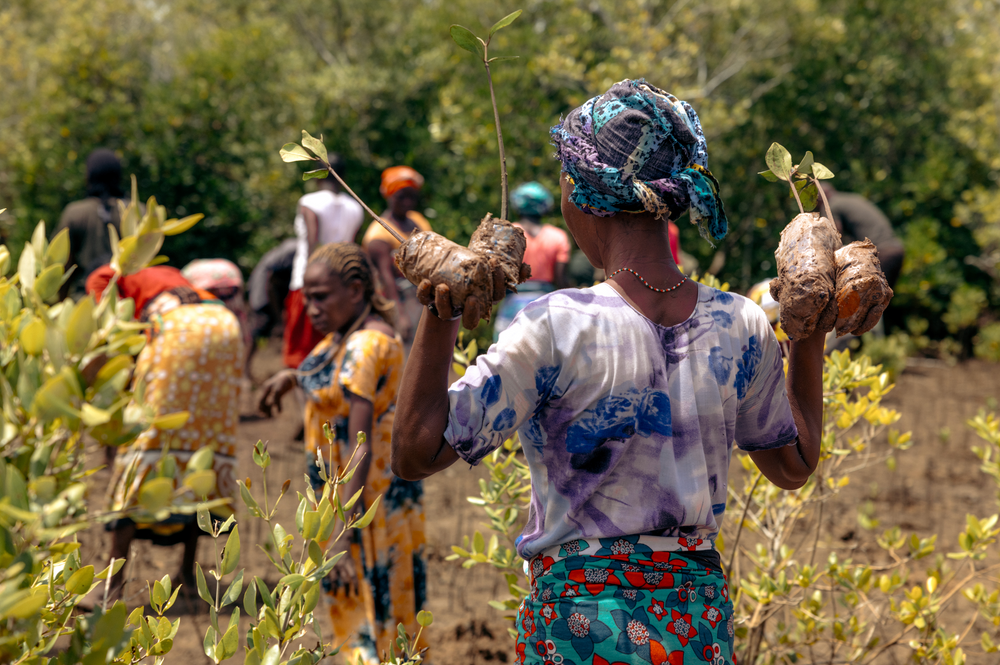
Empowering local communities to plant and protect mangrove ecosystems.
This project restores and protects 640 hectares of highly degraded mangrove forest within Kilifi County in Kenya. With the help of project partners COBEC (Community Based Environmental Conservation) and the local community, SeaTrees is supporting restoration of the Marereni mangrove forest ecosystems along Kenya’s eastern coast.
Since 2023, the project has planted 1,090,000 mangrove seedlings, successfully restoring 109 hectares of degraded land, and directly engaging and supporting over 800 local community members in restoration efforts.
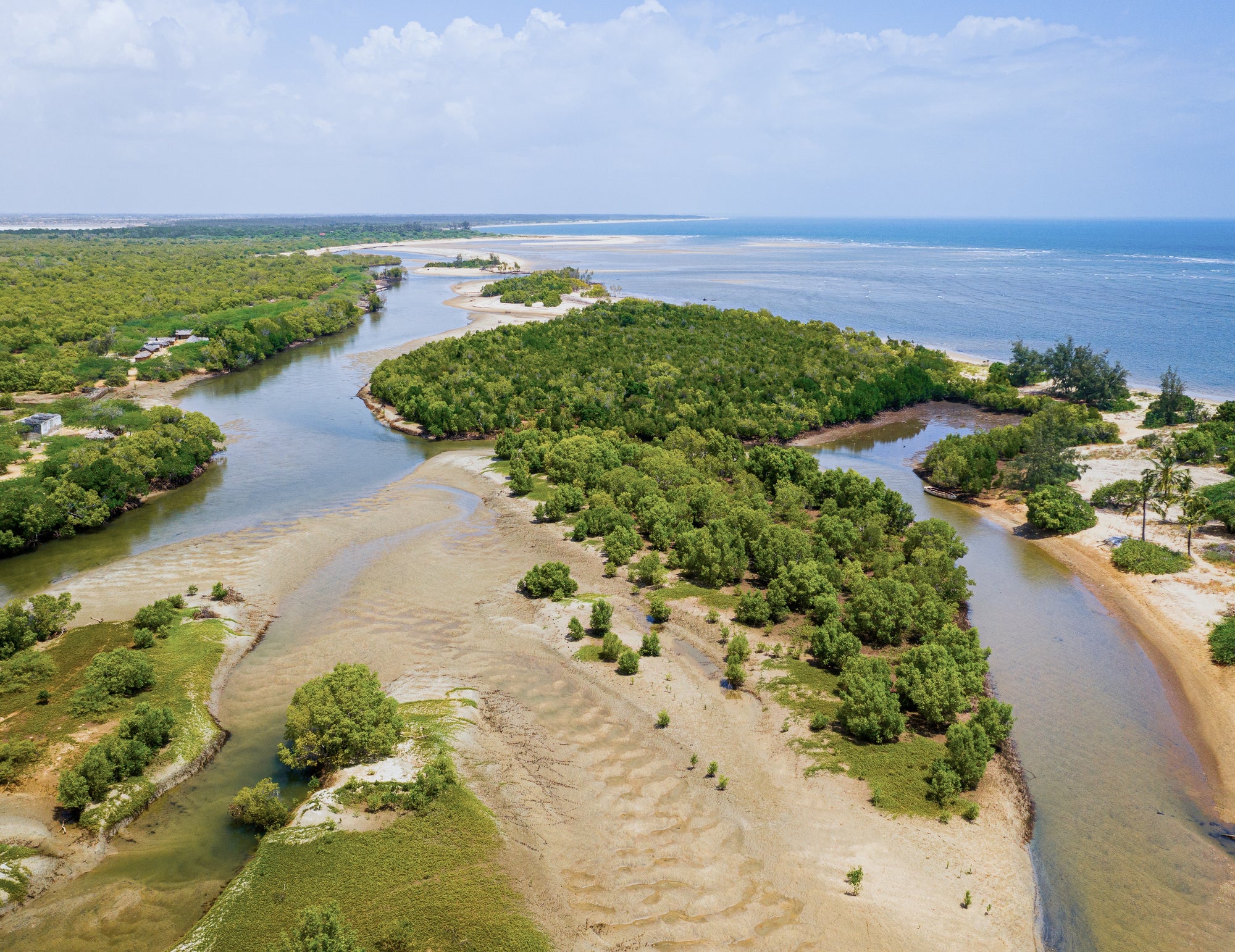
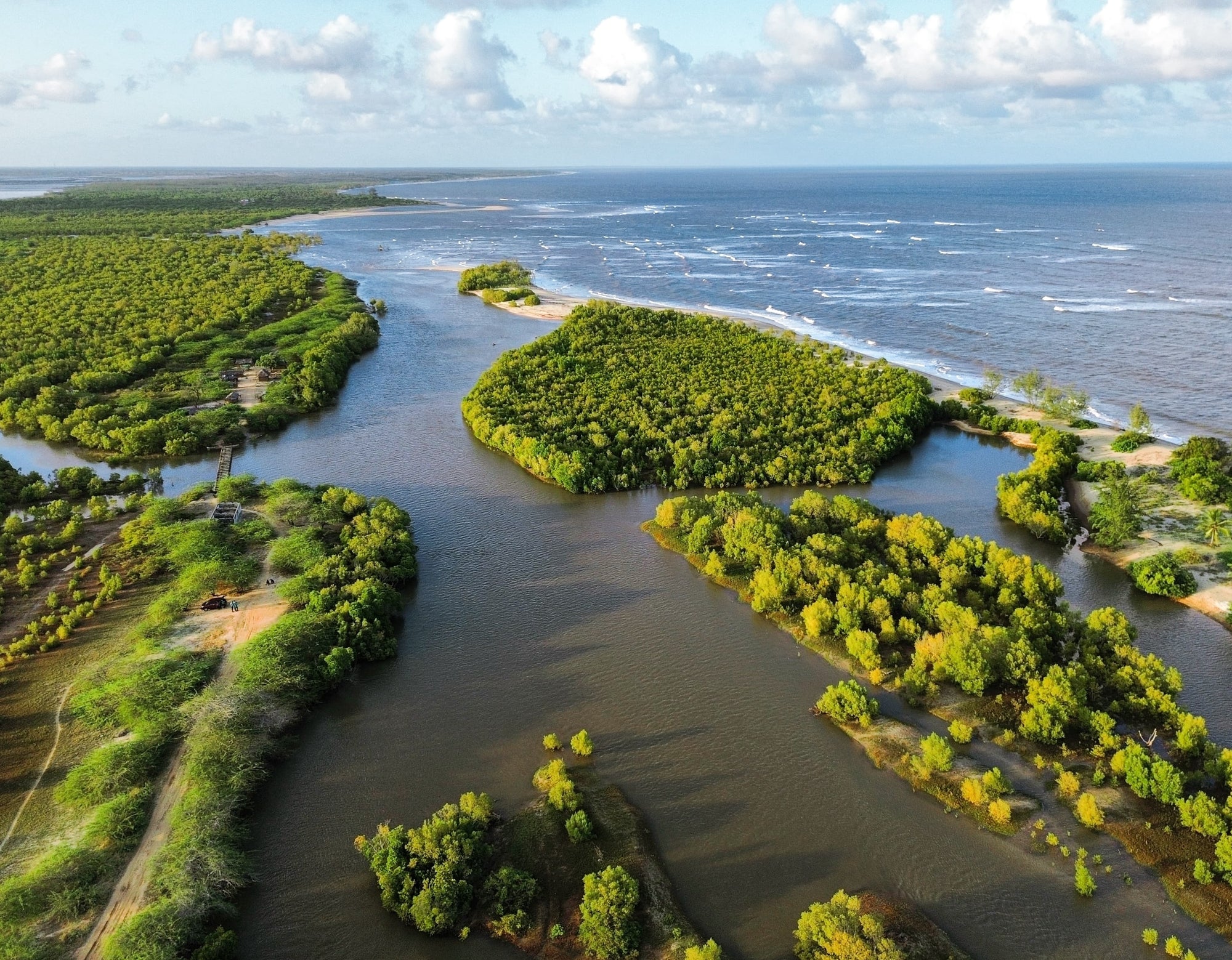
Marereni's mangrove forests are a tidal estuary. This means the health of the forest depends on the flow of ocean water in and out each day, which prevents excessive salinity.
Seatrees is actively working with COBEC and local communities to unblock channels and restore this flow, which will help prevent the degradation of remaining mangrove forests. Watch this space as it evolves with the help of our team on-ground.
Community-led Conservation
COBEC works with local villages to strategically replant mangroves in deforested areas. This project creates jobs and generates income for the local villages and community groups that manage the mangrove nurseries. More than 600 people are being employed to restore the mangrove forests at this project site.
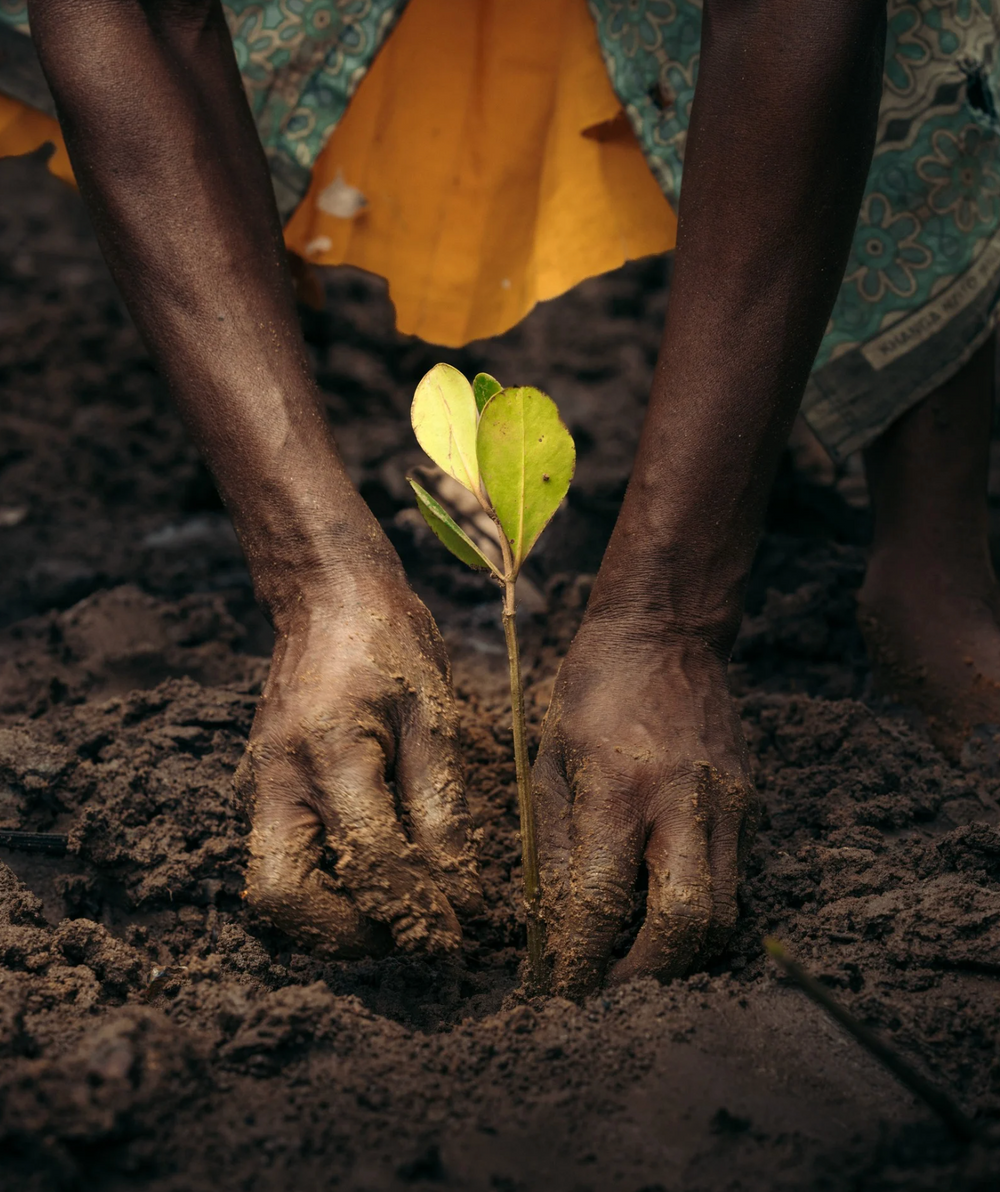
Project Summary
- 600+ jobs created for the local community
- 40% of jobs are held by women
- Increased access to healthcare and food
- Provides training to the local villagers who will manage mangrove nurseries
- Protection of local communities from storm surges and sea-level rise
- Increase fishing activities and resources
These communities are educated on the environmental and economic importance of the ecosystems and are employed to grow seedlings, collect mangrove propagules, plant mangroves, and monitor the growth of the trees.
This project will also continuously support the surrounding local communities by providing training, access to healthcare and food sources, increased revenue from tourism, improved infrastructure, and protection from storm surges and sea level rise.
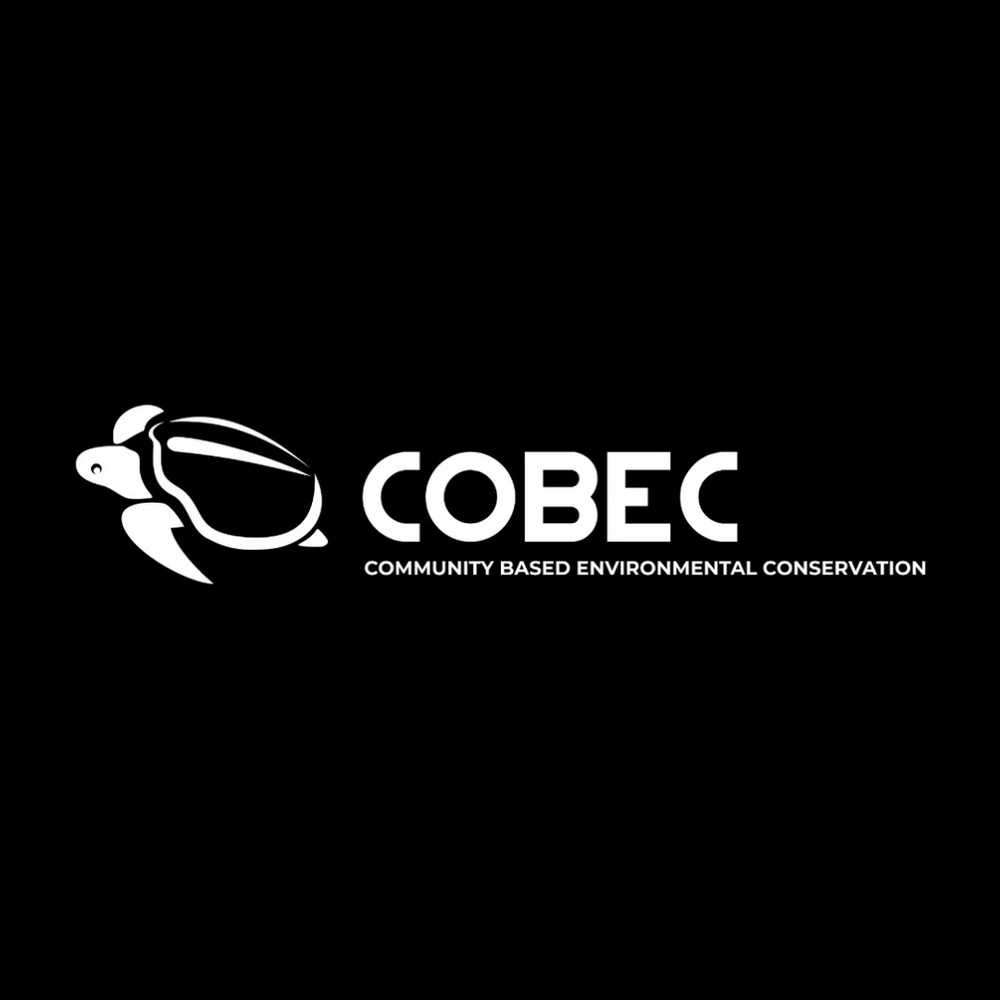
COBEC
Seatrees has partnered with COBEC (Community Based Environmental Conservation), a community-based organization founded in 2005 in Kenya – focused on local "grassroots" ocean conservation efforts.
Their main programs implemented with the support of the local communities and government stakeholders focus on mangrove forest restoration and sea turtle conservation
A little further reading...
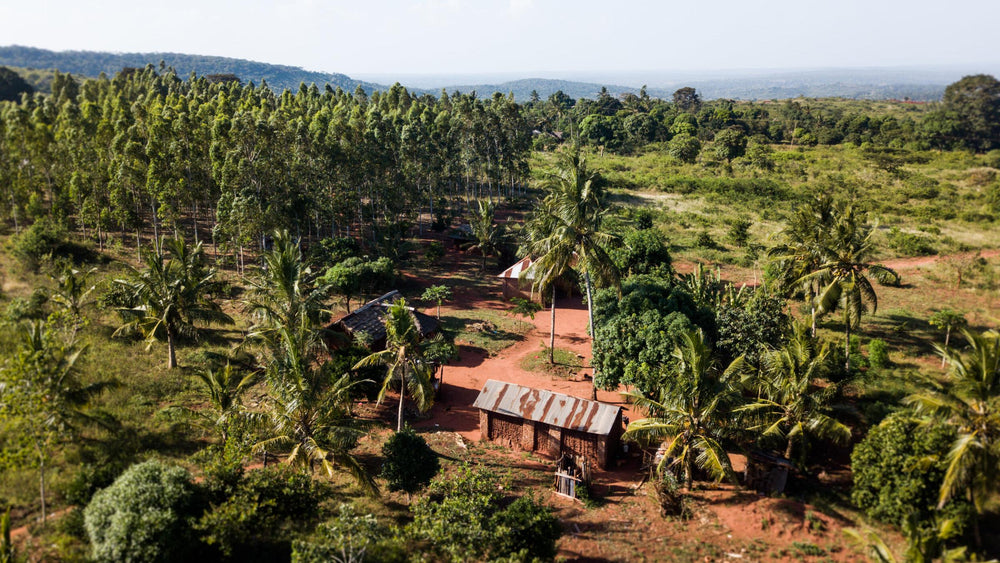
Threatened by deforestation
Over the last several years, the mangrove forests within the Marereni ecosystem have been destroyed by land conversion, poaching, and Illegal logging. This degradation has led to loss of biodiversity, increased coastal erosion, loss of sea grasses and coral reefs, and decreased availability of wood.
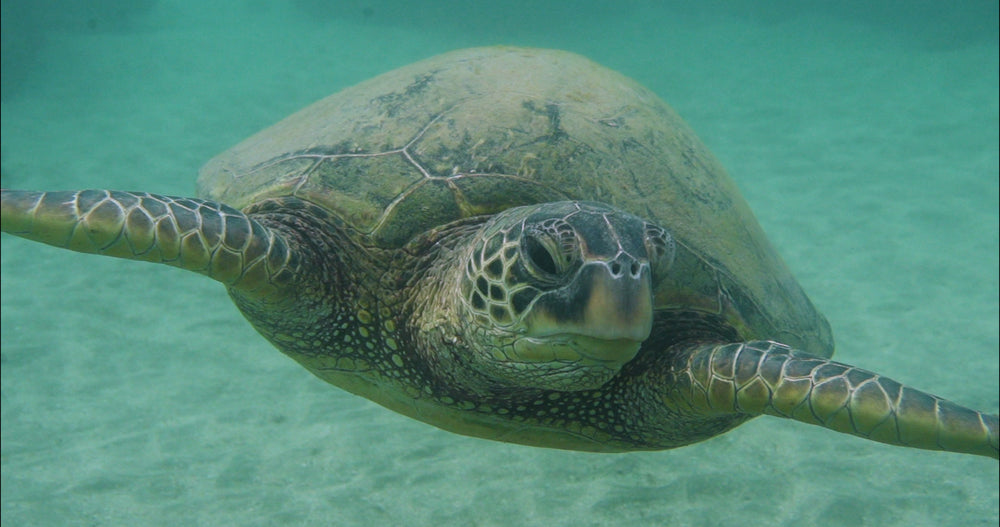
A Biodiversity Hotspot
The project area is made up of fringing, estuarine, and creek mangrove ecosystems. These habitats are important feeding and breeding grounds for many important fish species, and is home to baboons, monkeys, and turtles, as well as an important passage and feeding area for flamingos.
The regeneration of these mangrove forests will reestablish critical habitats for several species and ensure they thrive for many years to come.
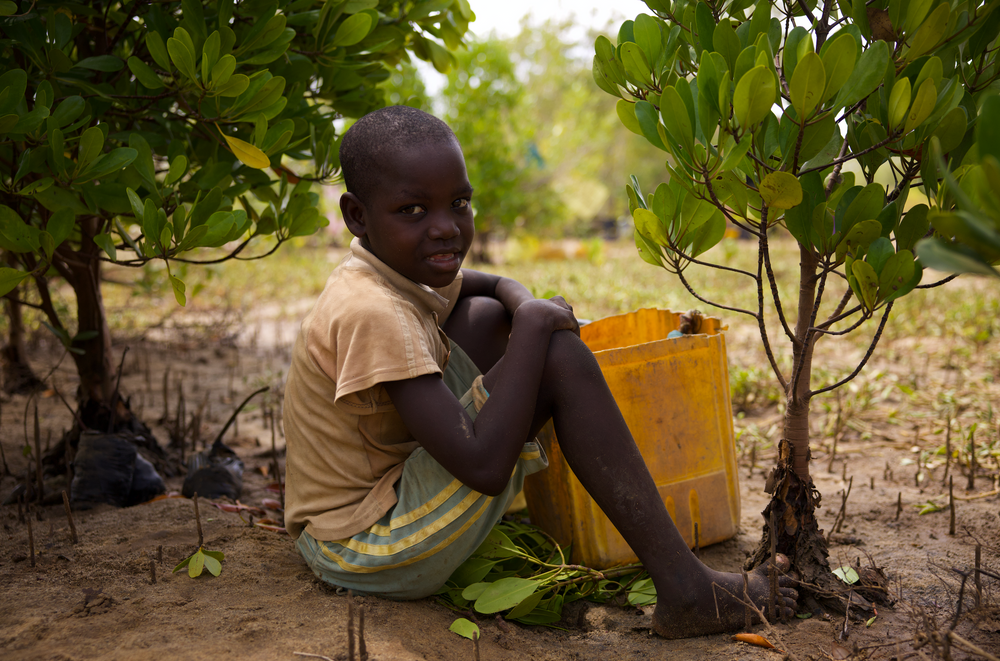
Sustainable Development
This project provides long-term employment for the local community. This in turn drives other Sustainable Development benefits.
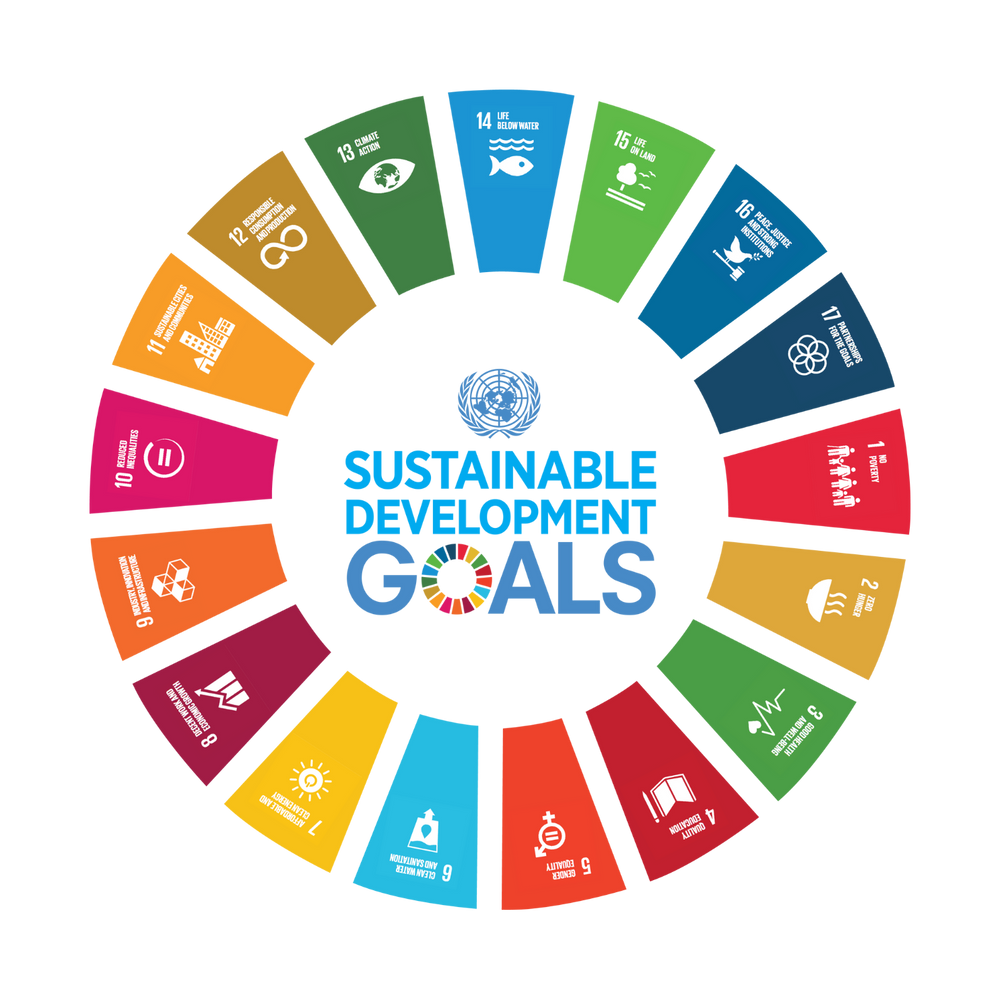
Regenerating Coastal Ecosystems Creates Sustainable Benefits
This project provides economic opportunities for over 600 people in the communities of the Marereni region. In addition to restoring a critical coastal ecosystem, SeaTrees and Community Based Environmental Conservation (COBEC) are creating lasting social impacts for the community members involved. Healthy mangrove ecosystems in Marereni ensure that fishing and eco-tourism continue to be viable economic drivers for the region.
Key Impact Metrics
- 1,090,000 mangrove seedlings planted to date
- 740 local tree planters employed
- 10 Community trainings / meetings held
- 40% of jobs are held by women
- Increased access to healthcare and food
- Provides training to the local villagers who will manage mangrove nurseries
- Protection of local communities from storm surges and sea-level rise
- Increase fishing activities and resources
- 30 mangrove trees will sequester 9 tons of CO2 over the 25-year lifetime of the tree
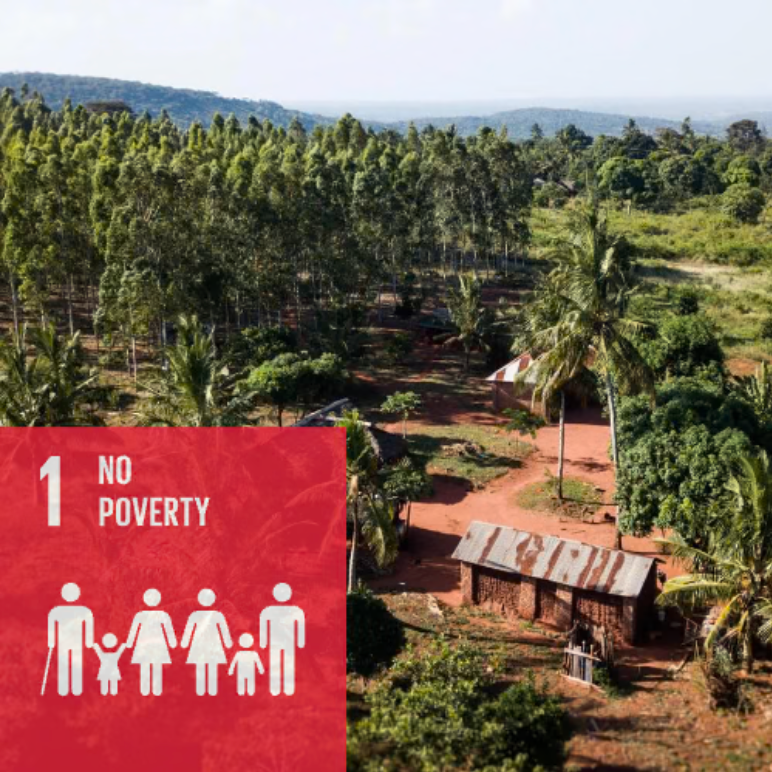
No Poverty
While Kenya has the largest economy in east Africa, 36% of its population still live below the international poverty line. This project generates economic opportunities for the communities in the Marereni area.
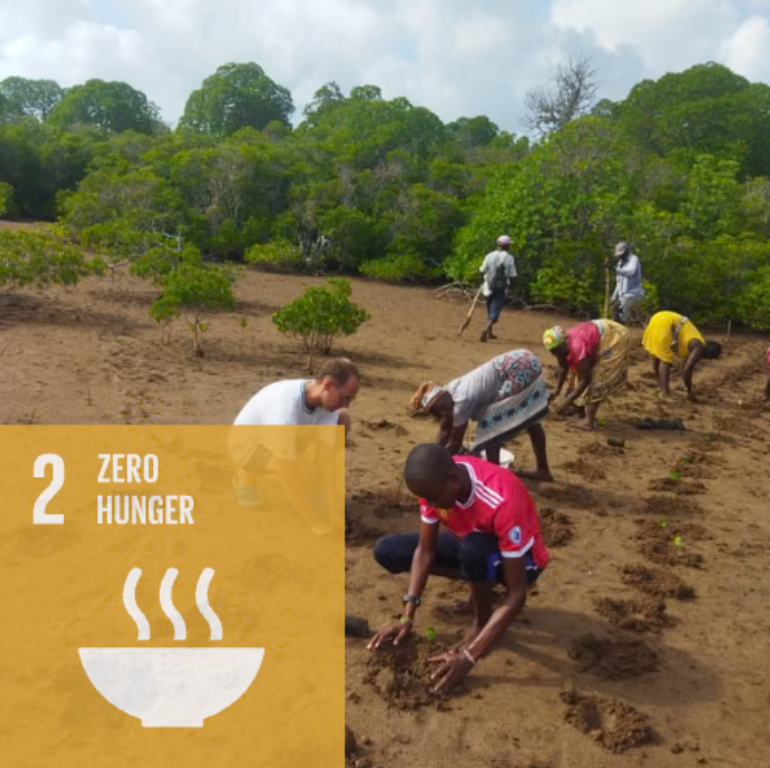
Zero Hunger
Community members are able to provide meals to their families with wages earned through nursery management.
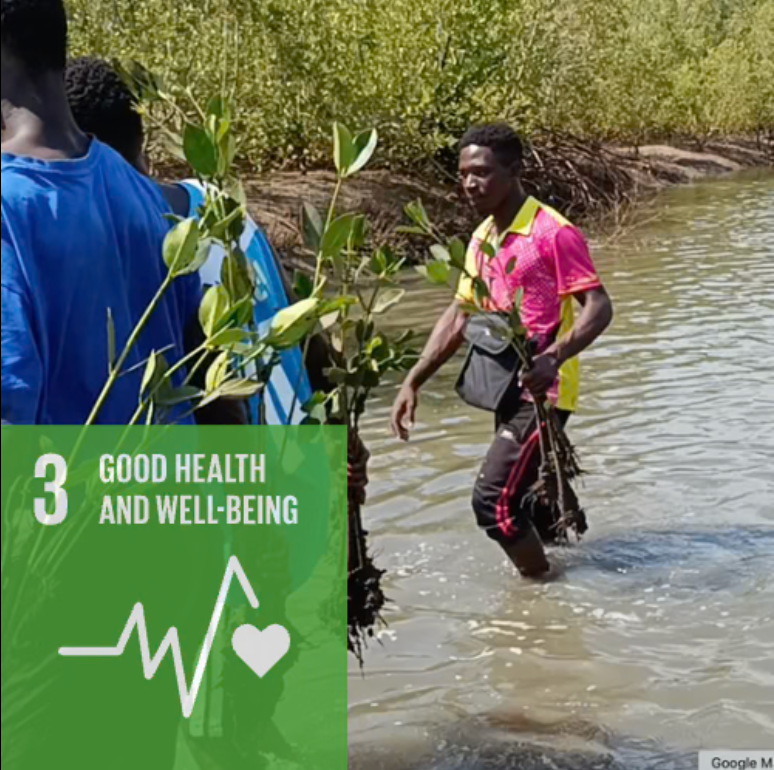
Good Health and Well-being
In Kenya, although certain hospitals provide free medical care to patients, many medical expenses are still unaffordable for individuals living at or below the poverty line. However, by participating in mangrove tree planting initiatives with COBEC, community members have been able to generate income that they have used to purchase medications for their households and receive medical treatment at clinics.
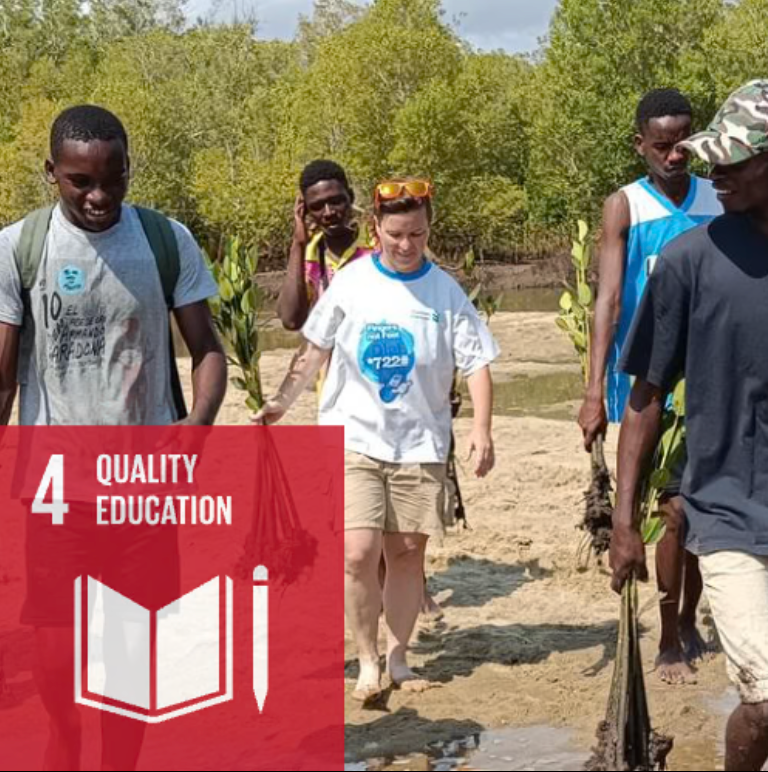
Quality Education
While school fees for Kenyan public schools were abolished in 2003, families still face costs for uniforms, school supplies, and more. Proceeds from the project will support in paying school fees for beneficiary families, as well as provide training sessions to beneficiaries.
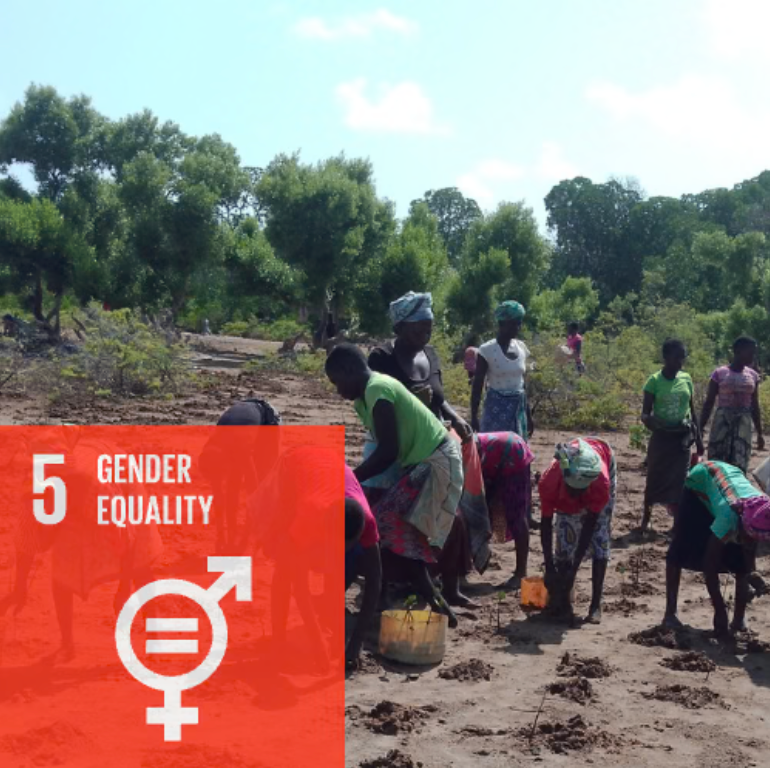
Gender Equality
The success of this project has been shown to rely heavily on women's participation. More than half of the community members involved in the tree planting and management of sapling nurseries are women.
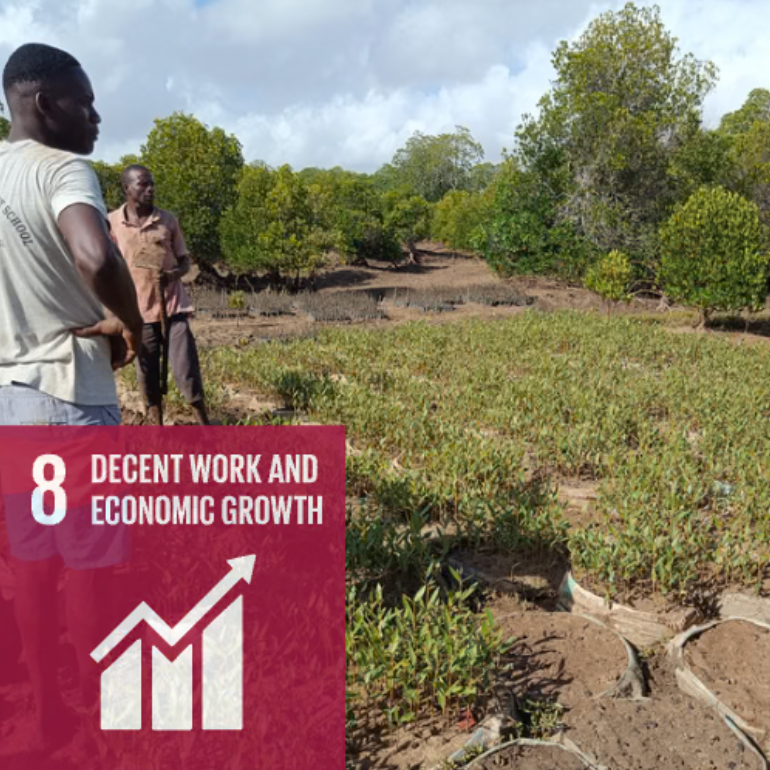
Decent Work and Economic Growth
The project will create jobs/income for the community groups that will establish nurseries. Over 600 people will be employed planting on a regular basis which will assist people in renovating their houses among other things mentioned above. The project will provide short-term employment opportunities during the project period. Additionally, individuals will have the opportunity to invest in long-term enterprises with the amount they earn from the project.
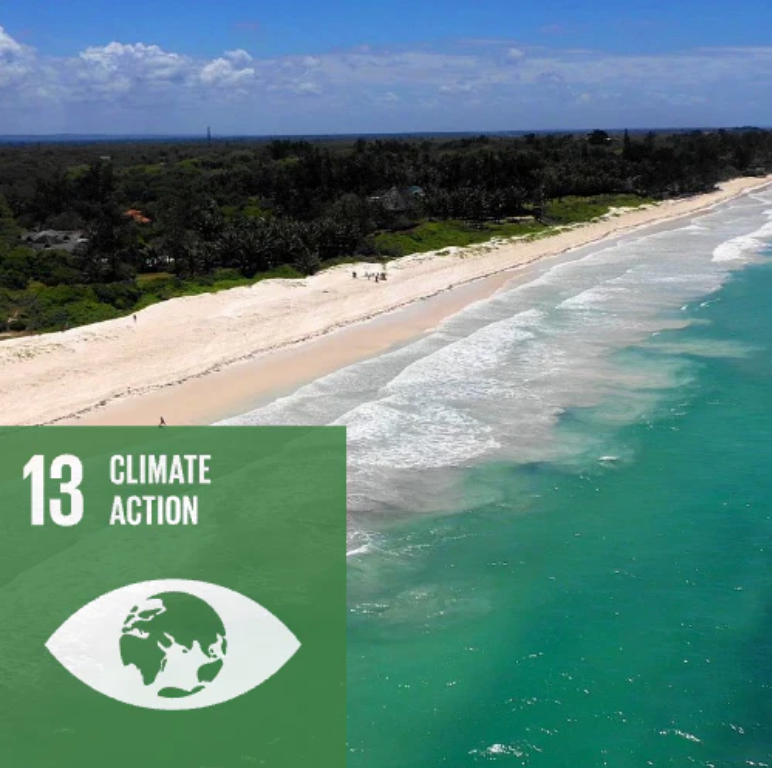
Climate Action
The threat of climate change is a worldwide concern that impacts all societies. To address this issue, SeaTrees has partnered with COBEC to raise awareness of the project and educate community members on the advantages of conserving mangrove ecosystems. COBEC conducts training sessions for the Marereni community on monitoring mangrove growth and survival to guarantee the long-term success of the restoration efforts.
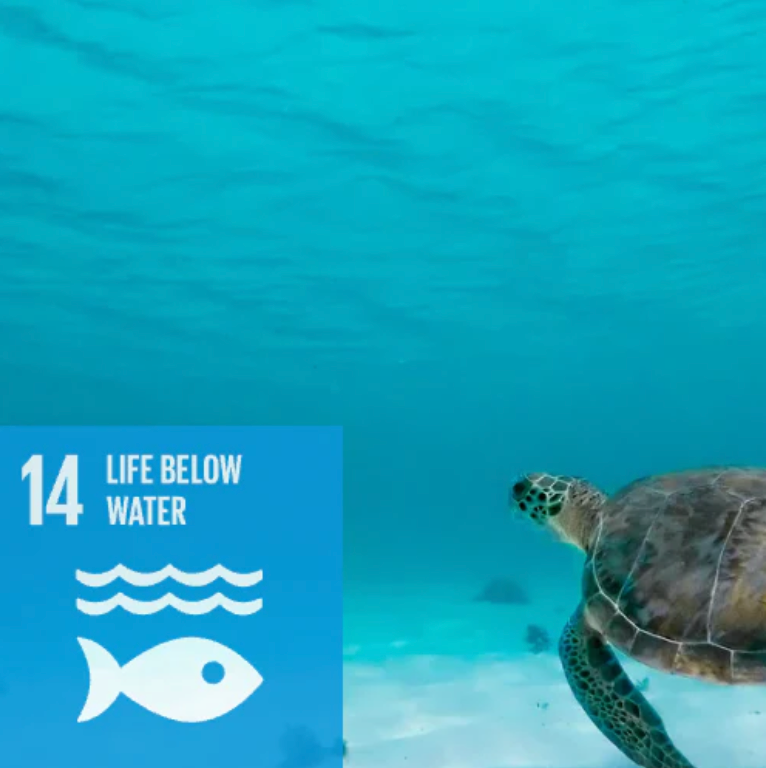
Life Below Water
The project area serves as important breeding grounds for many species of fish and is home to threatened species of turtles. Both seagrass and mangrove trees serve to trap sediments, benefiting local coral reefs and providing an important habitat for many marine species.
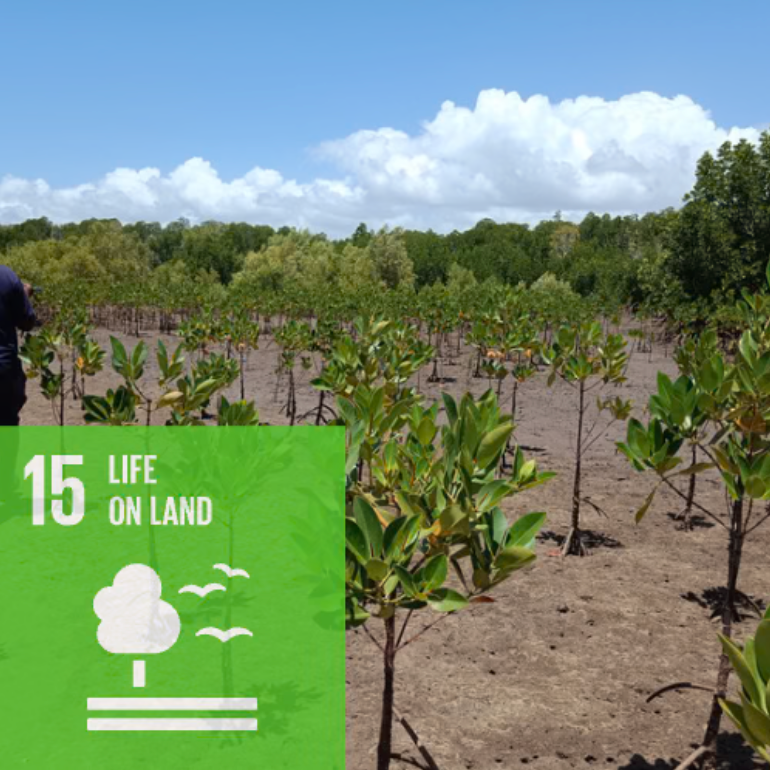
Life on Land
The project area is made up of fringing, estuarine, and creek mangrove ecosystems. These habitats are important feeding and breeding grounds and is home to baboons, monkeys, as well as an important passage and feeding area for flamingos.


